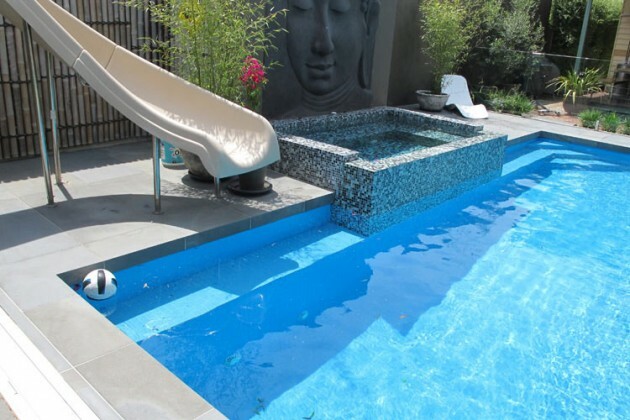Regardless of whether you are laying stone pavers inside or outside the home, you will need to ensure that they are properly grouted (if you aren’t laying them flush together). Not only will grout ensure that the area has a polished finish, it will help to hold the pavers in place and prevent them from becoming damaged. If you aren’t quite sure what grout is or aren’t sure what type to use for your natural stone project, you have come to the right place.

What is grout?
Firstly, we felt it was important to address what grout actually is for those of you who are completely unfamiliar with the term. Grout is a material (usually in the form of a paste or mortar) that is used to seal the gaps between tiles and stone pavers. Two of the most common forms are wet and dry grouting, but there is also a new generation of mortars that are well suited to such projects. The method you choose will depend on the area and your own personal preference.
What is dry grouting?
Once your pavers are laid, a dry grout product can be used to seal the joints. It is often a mix of sand and/or cement. The benefit of using this method is that it doesn’t cause staining and is quite easy to complete. The grout is typically mixed dry before being scattered onto the stone and swept into the joints using a soft brush. You may, however, need to go back over the surface a few times until the joints have been adequately filled and repeat this every year or so.

What is wet grouting?
This method is often recommended for pavers that have been used around swimming pools, in bathrooms or for joints that are larger than 3mm. It should be noted that wet grouting is not recommended for patterned or decorative stone, as it might leave a concrete residue on the surface. The grout is often rubbed into the joints and wiped down with a damp sponge. Another option is to mix the mortar wet and transfer it into the joints using a trowel.

What about cobblestones?
If you have opted for cobblestones in an outdoor area, we believe that crusher dust is a better suited grout. Similar to dry grouting, the dust is swept into the joints using a broom. The area is then hosed down using a high-pressure mist setting; this will allow the dust to properly settle into the joints and set. The shape and nature of these stone pavers makes them unsuited to the other grouting methods we have outlined here.
Are there other options?
These days, paving companies are also manufacturing fuss-free grout that suits more modern house designs. Once set, the grout is completely unaffected by the elements and is water permeable (this means that plants can continue to access necessary nutrients from above the stone pavers). Some varieties of grout are also designed to inhibit weed growth, which guarantees a low maintenance outdoor space that your family can enjoy.

